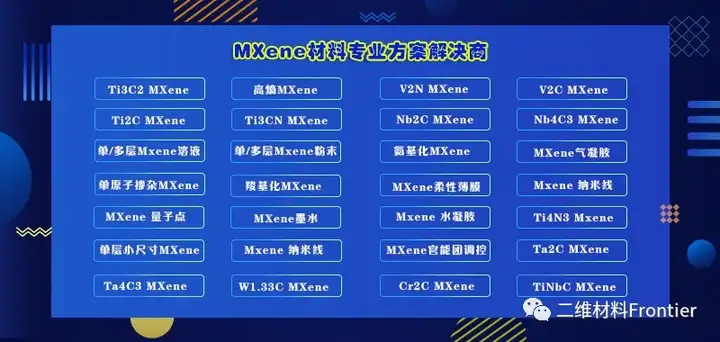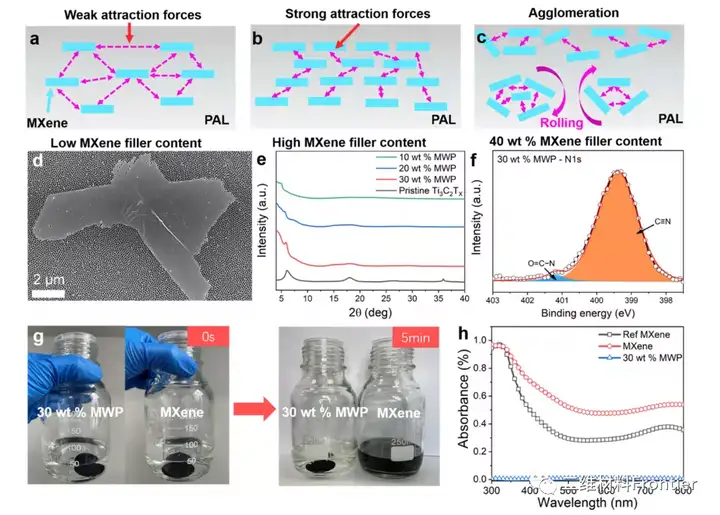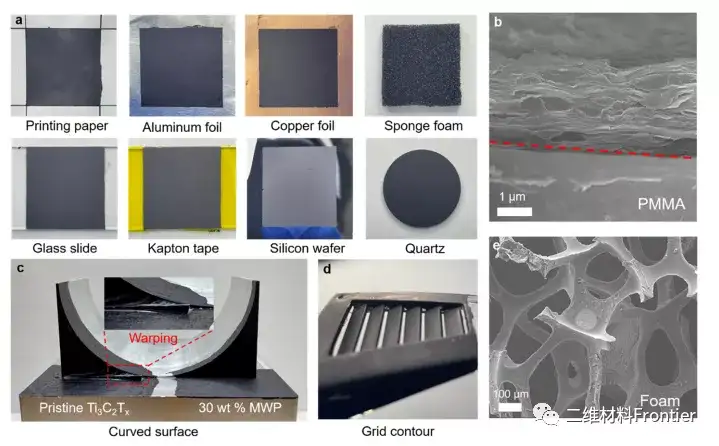ACS NANO: Ti3C2Tx MXene Terahertz absorption and shielding water-based paint


With the development of terahertz (THz) technology, there is an increasing demand for terahertz shielding/absorbing materials to avoid electromagnetic interference (EMI) or pollution. The coating can be quickly cured to form a film, and can be stably attached to any substrate, which is particularly suitable for shielding/absorption applications. In recent years, due to its good electronic conductivity and hydrophilicity, MXenes has attracted widespread attention in the field of electromagnetic interference shielding. Here, we show a kind of MXene water-based paint (MWP) based on copolymerized acrylic latex (PAL), which not only has strong terahertz electromagnetic interference shielding/absorption efficiency, but also can be easily adhered to various commonly used Terahertz substrate. The viscosity of MWP can be adjusted by adjusting the colloidal force and viscous force, and the cyano group in PAL provides a strong intermolecular polar interaction between MWP and the substrate. The results show that the MWP thickness of the quartz surface is 38.3 μm, the EMI shielding value is 64.9 dB, and the reflection loss of the coated sponge foam is 32.8 dB. This substrate-independent MWP provides a simple and effective method for achieving high-performance terahertz shielding/absorption.




3. Full text summary
In summary, the author proposes a general method that can effectively transform different substrates into excellent terahertz EMI shielding/absorbing substrates. When traditional EMI shielding materials are coated on various substrates, their interaction with the surface of the substrate is limited, which limits their wide application. A high-viscosity, high-adhesion, fast film-forming MXene water-based coating was prepared by using the copolymer PAL containing high polarity-C triN functional group, and its broadband terahertz electromagnetic interference absorption was demonstrated on various shapes of substrates. And shielding performance. The presence of various functional groups in the copolymer adjusts the viscosity of the MXene suspension by adjusting the colloidal force and viscosity. At the same time, the -C triN group of PAL provides a strong intermolecular polar interaction between the MWP and the substrate. Highly filled polymers are composed of conductive fillers, and highly polar groups can be a general strategy to overcome poor wettability and insufficient bonding interactions between most EMI coatings and substrates. Therefore, this work aims to provide a promising alternative to miniaturized electronics for 6G communications and EMI absorption and shielding on the most irregular device surfaces that need to eliminate terahertz radiation.
Article link:
https://doi.org/10.1021/acsnano.1c04656
This information is sourced from the Internet for academic exchanges. If there is any infringement, please contact us to delete it immediately
18915694570
Previous: Lin Jun/Cheng Ziyong B


